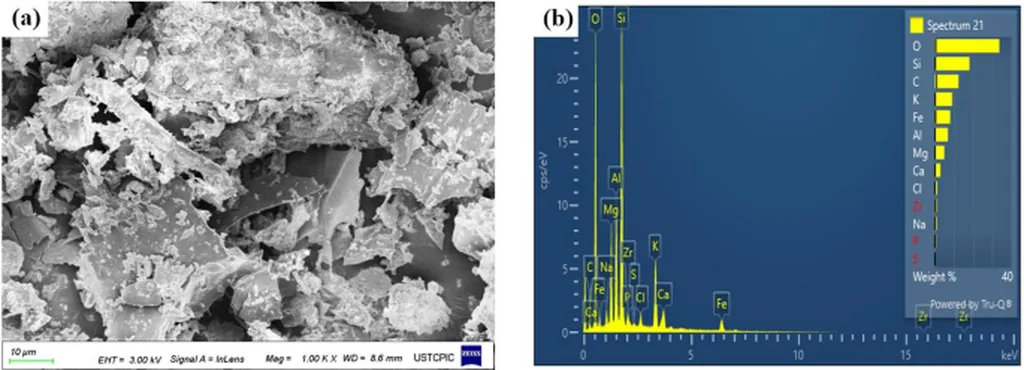In the quest for sustainable and cost-effective solutions to combat heavy metal contamination, researchers have turned to an unlikely hero: pressmud, a byproduct of the sugar industry. A recent study published in *Scientific Reports* (translated from its original name, *Nature Scientific Reports*) has revealed that pressmud could be a game-changer in the adsorptive removal of lead from industrial wastewater. The research, led by Basit Haider from the Nuclear Institute for Agriculture and Biology College (NIAB-C) at the Pakistan Institute of Engineering and Applied Sciences, offers promising insights into how this agricultural byproduct can be repurposed to address a critical environmental challenge.
Heavy metal contamination, particularly lead, poses significant risks to both human health and the environment. Industrial wastewater, often laden with toxic metals, is frequently discharged into the environment without adequate treatment. This poses a severe threat to aquatic ecosystems and public health. The search for efficient, low-cost, and environmentally friendly solutions has led researchers to explore various biosorbents, including citrus waste, rice straw, biochar, and activated carbon. However, the study by Haider and his team has identified pressmud as a standout performer in this arena.
Pressmud, a residue obtained during the sugar manufacturing process, has been found to exhibit a remarkable biosorption capacity for lead. “The biosorption capacity of pressmud for lead was found to be 5.30 mg g⁻¹, which is significantly higher than other biosorbents tested,” Haider explained. This finding is particularly noteworthy given the abundance of pressmud as a byproduct of the sugar industry, making it a readily available and cost-effective solution.
The study delved into the factors influencing the biosorption efficiency of pressmud, including temperature, pH, and biosorbent dose. The optimal conditions for lead removal were identified as a contact time of 4 hours, a biosorbent dose of 8 g L⁻¹, a temperature of 37°C, and a pH of 7. These findings provide valuable guidance for the practical application of pressmud in industrial wastewater treatment.
To understand the underlying mechanisms of lead biosorption, the researchers employed various models to study the kinetics and equilibrium isotherms. The pseudo-first-order (PFO) model best described the biosorption process, with high correlation coefficients indicating a good fit. The Langmuir model, which assumes monolayer adsorption, predicted a maximum biosorption capacity of 43.7 mg g⁻¹, highlighting the potential of pressmud as a highly effective biosorbent.
Characterization of pressmud using Fourier-transform infrared spectroscopy (FTIR), X-ray diffraction (XRD), scanning electron microscopy (SEM), and Brunauer-Emmett-Teller (BET) analysis revealed the presence of various functional groups, a highly porous nature, and a large surface area. These properties contribute to the exceptional biosorption capacity of pressmud, making it an attractive option for industrial wastewater treatment.
The implications of this research extend beyond the immediate environmental benefits. The sugar industry, a significant player in the global economy, generates vast amounts of pressmud as a byproduct. Repurposing this material for wastewater treatment not only addresses a critical environmental issue but also creates new commercial opportunities for the industry. The energy sector, in particular, stands to benefit from this innovation, as the treatment of industrial wastewater is a pressing concern for many energy-intensive industries.
As the world grapples with the challenges of heavy metal contamination and environmental sustainability, the findings of this study offer a beacon of hope. The repurposing of pressmud as a low-cost and effective biosorbent for lead removal represents a significant step forward in the quest for sustainable solutions. The research conducted by Basit Haider and his team at NIAB-C underscores the importance of interdisciplinary collaboration and innovative thinking in addressing global environmental challenges.
In the words of Haider, “This study not only highlights the potential of pressmud as a biosorbent but also opens up new avenues for the utilization of agricultural byproducts in environmental remediation.” As the world continues to seek sustainable and cost-effective solutions, the repurposing of pressmud for lead removal from industrial wastewater stands as a testament to the power of innovation and the potential for a greener future.

